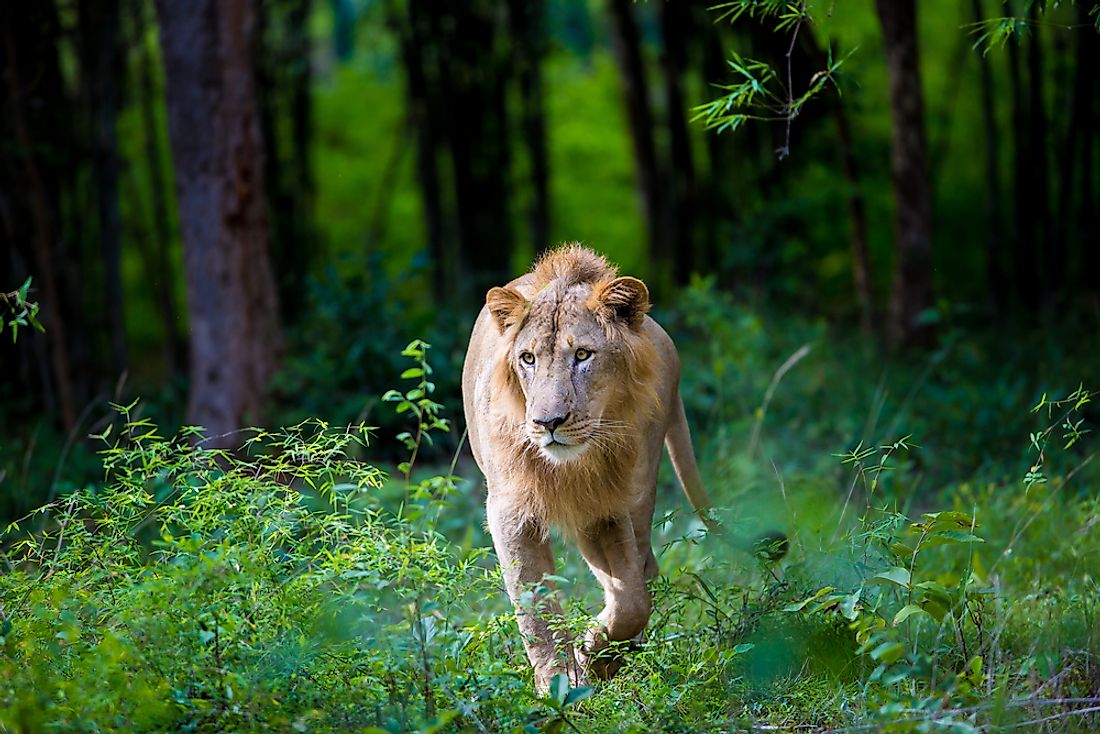Where Do Asiatic Lions Live In The Wild?

Lions are widely regarded as the kings of the animal jungle with most of them being indigenous to Africa. Their hunting prowess has pushed them to the top of the food chain. There is, however, a fascinating species of lions found only in the Indian state of Gujarat that have been forced to face hurdles not experienced by their cousins in Africa. These are the Asiatic Lions, and they differ significantly from those in Africa.
The Asiatic Lion
One of the most salient features of the Asiatic Lion is the lack of a mane in males. The majestic tuft of fur that falls over the shoulders in African male lions is severely lacking in Asiatic lions, a feature that has made them unique. These lions were brought to the attention of the world in 1826 by a zoologist called Johann Meyer. Males can reach a shoulder height of about 3.94 feet while females reach heights of approximately 3.51 feet. In comparisons to the lions in Africa, the Asiatic lion is the same size as the Central African lion but smaller than the large African lions.
Habitat
Human encroachment has forced the habitats of lions to shrink to a small area of only 545 square miles. The Gir Forest in India is now home to 650 Asiatic lions as of a 2017 census. Their habitat is now a protected sanctuary that forbids any human activity within the area. The forest has been divided into five sanctuaries, which include the Gir National Park, the Gir Sanctuary, Mitiyala Sanctuary, Girnar Sanctuary, and Pania Sanctuary. Thanks to these efforts to protect the Asiatic lions their populations have increased and their habitat range is also gaining back areas lost to humans. The current area that the lions reside in is about 2,700 square miles.
Threats to the Asiatic Lion
Besides the human encroachment to their habitat that nearly drove the lions to extinction some years back the other significant threat that these lions face is an extinction that could be brought about by an epidemic. The Asiatic lions exist as a subpopulation which makes them vulnerable. Poaching of Asiatic lions has also risen in recent years with the demand for coats made out of their skins shooting up. The heavy presence of cattle in the forest also lead to a reduction in the population of the wild herbivores like the buffalos which could not compete for food with cattle. This indirectly affected the Lions since these animals are their primary source of food. The effect of this was that the lions now turned to cattle for food and in turn, humans killed the lions in retaliation.
The Future of Asiatic Lions
With their numbers gradually increasing more measures are being put in place to ensure they have enough space to live in with minimal conflicts with humans. Electric fences, open wells, and railway tracks have been contributing to the many accidental deaths of the lions, but things are changing with communities living close to the conservancies exercising caution when putting up electric fences and filling up unused wells.











